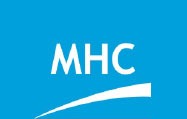Nose Conditions and Treatment
The nose serves as the primary entryway for air into our respiratory system, helps balance pressure in our sinuses and middle ear, filters foreign particles from the air, and enables our sense of smell.
Common nasal symptoms include an itchy or runny nose, congestion, nosebleeds, postnasal drip, olfactory issues, nasal pain, and facial congestion. Given the connection between the nose and ears, some individuals might also experience ear blockage, reduced hearing, tinnitus (ringing in the ear), or resort to mouth breathing, which can lead to a dry throat or frequent sore throats.
During your visit, a nasoendoscopy is typically conducted. This is a quick and comfortable procedure where a flexible nasoendoscopy is inserted through the nose after an anaesthetic decongestant nasal spray has been applied. The purpose is to thoroughly examine the nasal cavity and upper airway. If any lesions are detected, nasal biopsies or chemical cautery for nosebleeds may be performed concurrently.

Nasal conditions:
Epistaxis, or nosebleeds, are common occurrences that can result from various factors such as dry air, trauma, allergies, or underlying health conditions. While most nosebleeds are harmless and can be managed at home, frequent or severe nosebleeds may require medical evaluation to rule out any serious underlying issues.
Nasal bone fractures are breaks or cracks in the bones of the nose, typically resulting from trauma such as sports injuries, falls, or accidents. Symptoms include pain, swelling, bruising, and difficulty breathing through the nose. Treatment may involve realigning the bones (reduction) and managing symptoms to ensure proper healing.
Allergic rhinitis, commonly known as hay fever, is an allergic reaction to airborne allergens like pollen, dust mites, or pet dander. Symptoms include sneezing, nasal congestion, runny nose, and itchy eyes. Management often includes avoiding allergens, taking antihistamines, and in some cases, immunotherapy to reduce sensitivity to allergens.
Sinusitis is the inflammation of the sinuses, which can be acute or chronic. Acute sinusitis often follows a cold and lasts less than four weeks, while chronic sinusitis persists for more than 12 weeks. Symptoms include nasal congestion, facial pain, and thick nasal discharge. Treatment options include decongestants, nasal corticosteroids, and sometimes antibiotics or surgery.
Nasal polyps are non-cancerous growths in the lining of the nasal passages or sinuses. They can cause breathing difficulties, loss of smell, and frequent infections. Polyps are often associated with chronic inflammation, such as in asthma or chronic sinusitis. Treatment may include medications to shrink polyps or surgery to remove them.
A deviated nasal septum occurs when the thin wall between your nasal passages (septum) is displaced to one side, causing breathing difficulties, nasal congestion, and frequent sinus infections. This condition can be congenital or result from injury. Septoplasty is a common surgical procedure to correct the deviation and improve airflow.
Inferior turbinate hypertrophy involves the swelling of the turbinates, structures inside the nose that help filter and humidify the air we breathe. Enlarged turbinates can cause nasal obstruction and breathing difficulties. Treatment options include medications to reduce swelling or surgical procedures to reduce the size of the turbinates.
Nasopharyngeal cancer (NPC) is a type of cancer that occurs in the nasopharynx, the upper part of the throat behind the nose. Symptoms may include a lump in the neck, nasal congestion, nosebleeds, and hearing loss. Treatment typically involves radiation therapy, chemotherapy, or a combination of both, depending on the stage and extent of the cancer.
Sinonasal tumours are abnormal growths in the nasal cavity or sinuses, which can be benign or malignant. Symptoms may include nasal obstruction, facial pain, nosebleeds, and a decreased sense of smell. Treatment depends on the type and stage of the tumour and may involve surgery, radiation therapy, or chemotherapy.
Nasal procedures:
Nasoendoscopy is a diagnostic procedure that involves inserting a thin, flexible tube with a camera (endoscope) into the nasal passages and sinuses. This allows the doctor to visually examine the nasal cavity, sinuses, and throat for abnormalities. It is a quick, minimally invasive procedure used to diagnose conditions such as chronic sinusitis, nasal polyps, and other nasal issues.
Cautery or hemostasis is a procedure used to stop nosebleeds (epistaxis) by sealing the blood vessels in the nose. This can be done using chemical agents, electrical devices, or heat. It is particularly useful for recurrent or severe nosebleeds that do not respond to conservative treatments.
Endoscopic septoplasty is a minimally invasive surgical procedure to correct a deviated septum. Using an endoscope for better visualization, the surgeon straightens the septum, which is the wall dividing the nasal passages. This procedure improves airflow and alleviates symptoms like nasal congestion and frequent sinus infections.
Endoscopic turbinoplasty is a surgical procedure to reduce the size of the turbinates, which are structures inside the nose that help filter and humidify the air. Enlarged turbinates can cause nasal obstruction and breathing difficulties. The procedure uses an endoscope to precisely trim or reshape the turbinates, improving airflow and reducing symptoms.
Endoscopic adenoidectomy is the surgical removal of the adenoids, which are lymphatic tissue located in the upper part of the throat behind the nose. This procedure is performed using an endoscope for better precision and is often recommended for children with recurrent ear infections, nasal obstruction, or sleep apnea due to enlarged adenoids.
This procedure involves realigning broken nasal bones to their proper position following a fracture. It is typically performed soon after the injury to ensure proper healing and to prevent long-term deformities or breathing issues. The procedure may be done under local or general anesthesia, depending on the severity of the fracture.
Endoscopic sinus surgery is a minimally invasive procedure used to treat chronic sinusitis and other sinus-related conditions. By using an endoscope, the surgeon can remove blockages, polyps, or diseased tissue from the sinuses, improving drainage and alleviating symptoms. This procedure is often recommended for patients who do not respond to medical treatments.
Balloon sinuplasty is a less invasive procedure that uses a small, balloon-like device to open blocked sinus passages. The balloon is inflated to expand the sinus openings, restoring normal drainage and relieving symptoms of chronic sinusitis. This procedure is an alternative to traditional sinus surgery and is associated with quicker recovery times.

Our ENT Specialist
Dr Alex Tham
MBBS (Singapore), MRCSEd (ENT), MMED (ORL), FAMS (ORL)
At Dr. Alex Tham's ENT practice, we prioritize your well-being and satisfaction. Here's why patients trust us:

Same day appointments for your convenience

Attentive and conscientious team dedicated to your care

Minimally invasive techniques for optimal outcomes

MOH-compliant transparent pricing for peace of mind
Insurance
We are on the specialists panels of the following Health Networks/Insurance Plans:
Personal Insurance



Corporate Insurance




Asian Healthcare Specialists
@ Mount Alvernia
820 Thomson Road,
#05-03 Mount Alvernia Medical Centre Block A,
Singapore 574623
